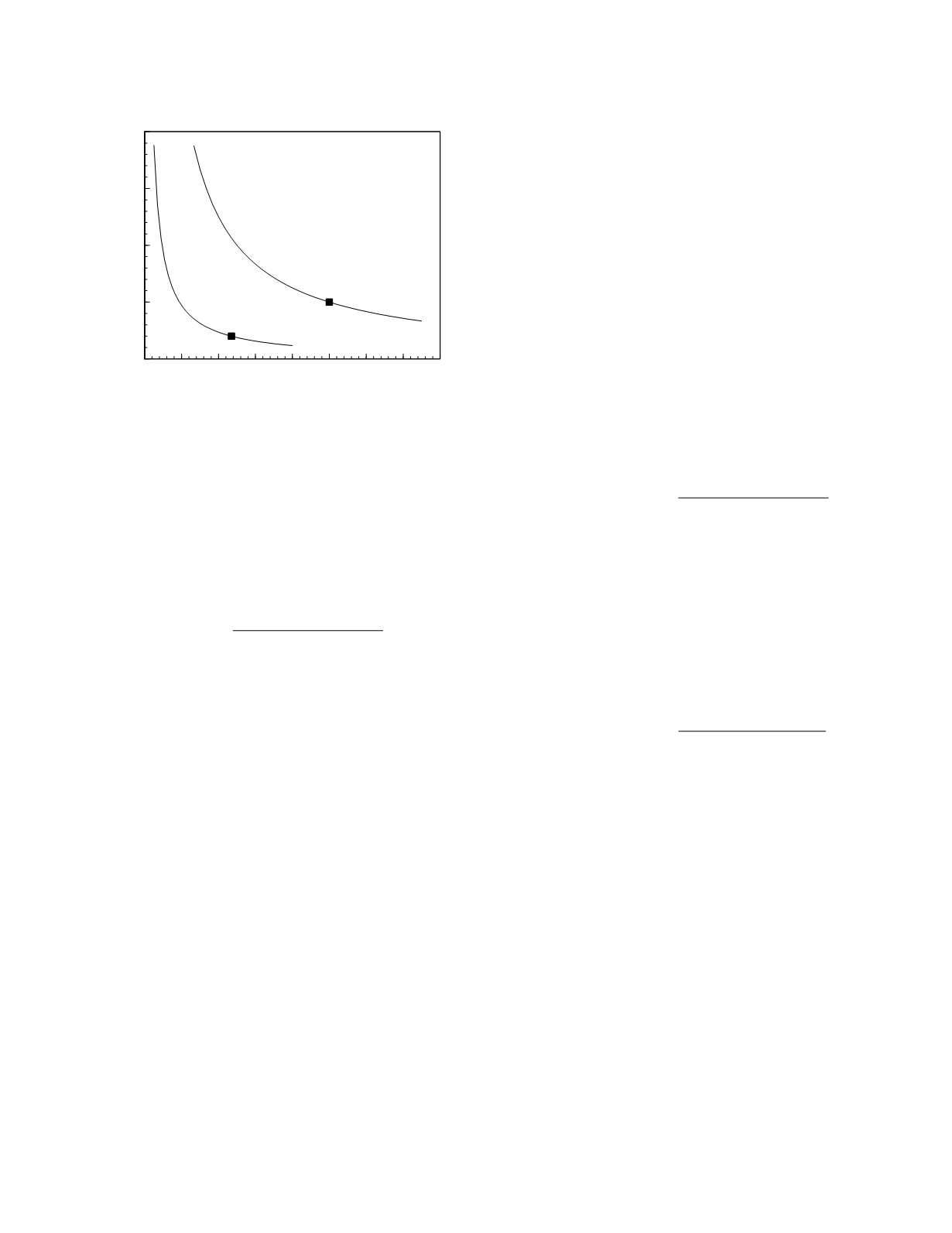
is impractical. Indirect measurements are based
upon the steady-state relationship of the plasma
concentration of a marker substance and the
substance's clearance rate. Rearrangement of the
relationship yields
clearance rate
=
synthetic rate
plasma concentration
If it is assumed that the marker substance is elimi-
nated solely from the organ of interest and the rate
of synthesis of the substance is a constant, organ
clearance rate can be estimated from the plasma
concentration of the marker substance. Unlike the
synthetic rate, however, this relationship is not
linear but hyperbolic. Consequently, the magnitude
of the change in the plasma concentration of a
marker substance following the alteration in organ
function will depend not only upon the magnitude of
the alteration but also upon the clearance rate present
prior to the alteration. Figure 7.4 shows the hyper-
bolic relationship between clearance rate and plasma
concentration for creatinine (Cockcroft and Gault
1976), which is cleared by the kidneys, and unconju-
gated bilirubin (Berk
et al.
1969), which is cleared
by the liver. Representative normal values for the
plasma concentrations and clearance rates are shown
as squares. For both these substances, starting from
a normal clearance rate, a reduction in the clearance
rate will result in only a very modest elevation in the
plasma concentration. When organ function is poor,
however, and the clearance rate is low, even a slight
additional reduction in the clearance rate will cause a
marked increase in plasma substance concentration.
Thus, marker substances of organ clearance function
show increasing sensitivity to changes in organ
function as the organ's functional status deteriorates.
Clearance of exogenous substances.
Exoge-
nous substances can be used instead of endogenous
markers for the evaluation of clearance function.
Renal clearance rates can be measured directly, but
the clearance of exogenous substances by other
organs must be measured indirectly. Of course,
renal clearance can be measured indirectly also. As
is true for endogenous substances, exogenous marker
substances must be eliminated solely from the organ
of interest for the indirect measurements to be valid.
If an exogenous substance is administered by
continuous infusion its clearance rate can be calcu-
lated, once the steady state is achieved, by using the
relationship
organ clearance rate
=
infusion rate
plasma concentration
It is often impractical to administer a continuous
infusion or to wait for steady state to be achieved,
however. In such cases the exogenous substance can
be given either by bolus injection or by short
infusion or it may be given orally. The plasma
concentration of the substance is followed over time,
and a plasma disposition curve is constructed, as
illustrated in Figure 7.5. The clearance rate can
then be calculated using the formula
organ clearance rate
=
amount administered
AUC
where AUC is the area under the disposition curve.
The number and timing of samples is of obvious
practical importance when performing clearance
studies. The sampling schedule should be designed
to achieve minimum measurement variability in the
estimation of the clearance rate while minimizing the
discomfort and inconvenience to the patient and the
expense of analyzing the specimens. If the substance
is administered by continuous infusion, one speci-
men is adequate but it must be obtained after reach-
ing steady state. If the substance is administered by
bolus injection and has a monoexponential plasma
clearance curve, two specimens should be taken, the
first as soon as practical after the injection of the
substance is complete and the second at the antici-
pated turnover time of the substance in the patient
(1.44 times the plasma half-life). This sampling
scheme results in the maximum precision in the
estimation of the clearance rate (Dossing
et al.
Organ Function
7-3
Figure 7.4
Steady-state relationship between plasma
concentration and clearance rate for unconjugated bilirubin,
creatinine, and carbon dioxide. The mean concentration
and clearance rate pairs for normal adults are indicated by
squares.
0 20 40 60 80 100 120 140 160
Creatinine, bilirubin clearance rate (ml/min)
0
1
2
3
4
Creatinine, bilirubin (mg/dl)
creatinine
bilirubin


